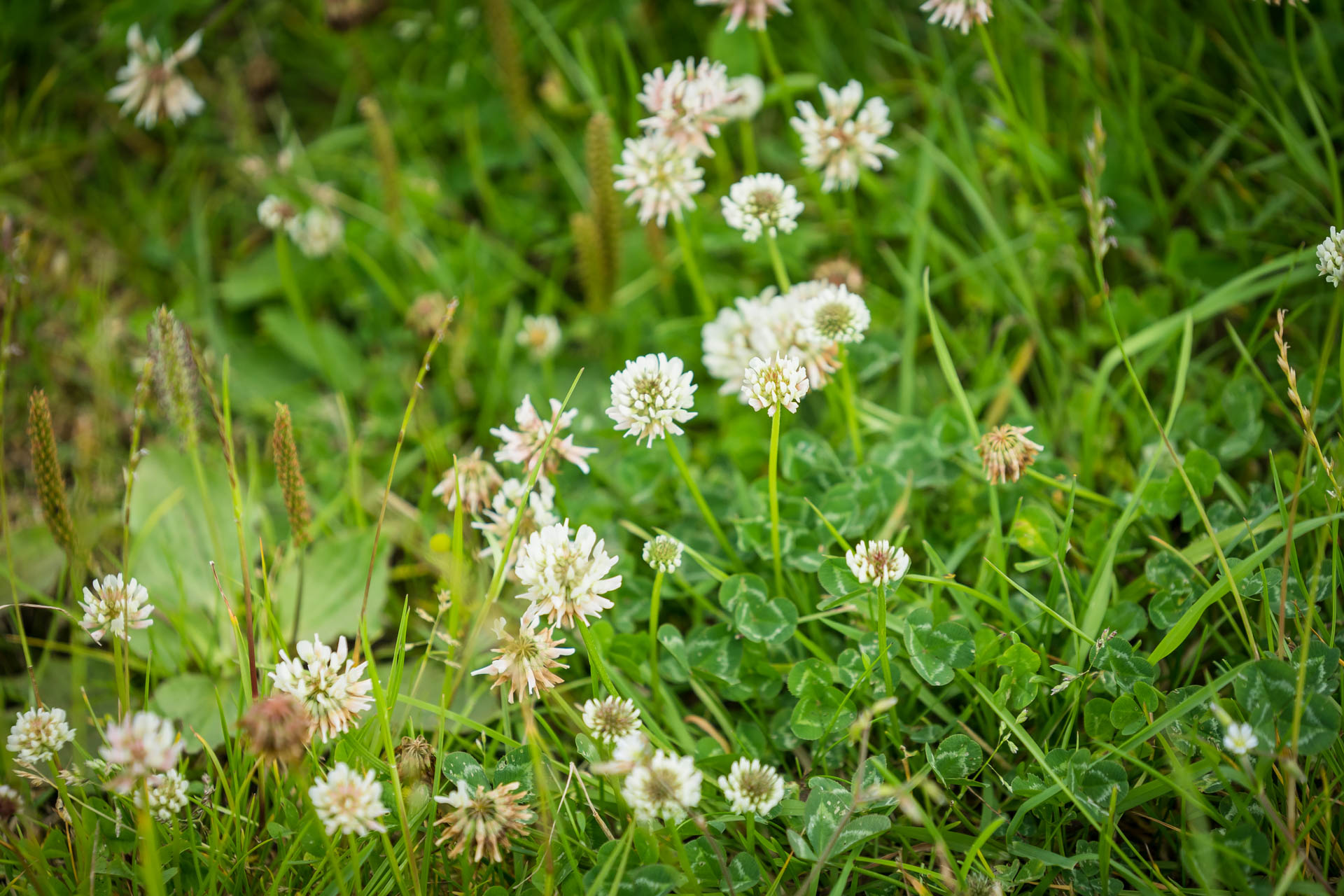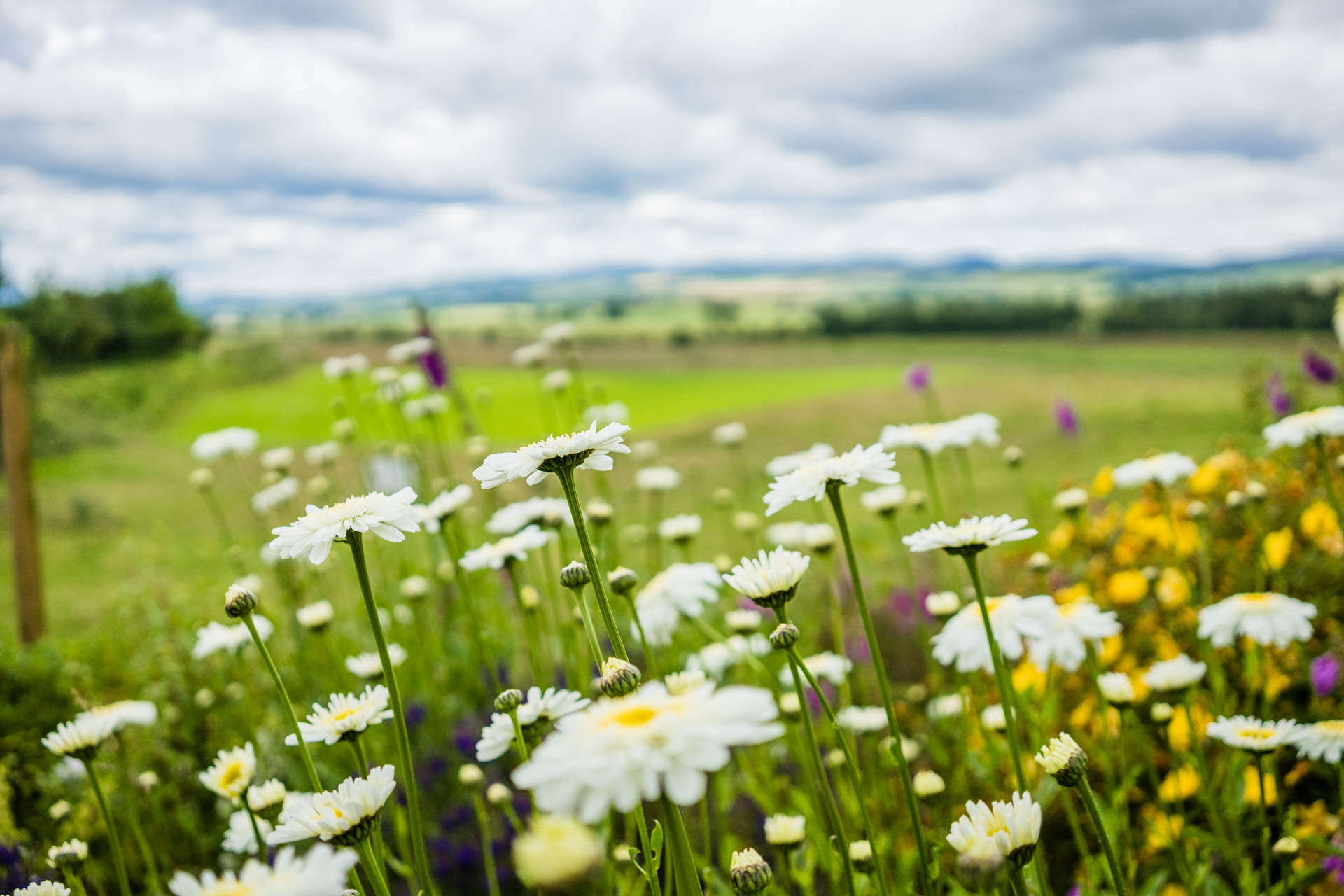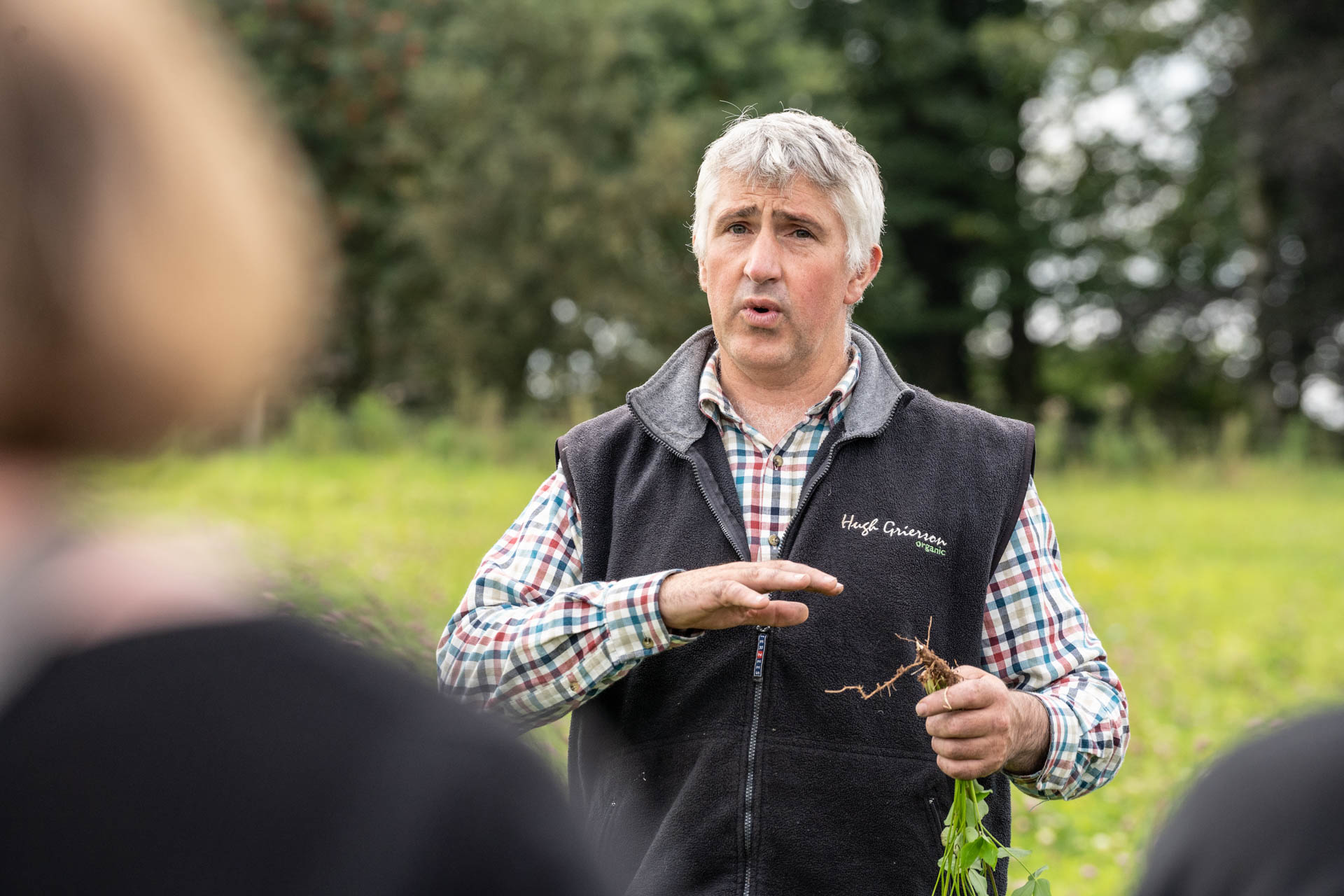Conservation
My father was not an organic farmer. He watched with ‘interest’ as I stopped using sprays and fertiliser. He always worried about the weeds but the change that he really noticed was the butterflies. Insects have thrived since we went organic, especially the butterflies. They are drawn to the red clover that we plant for soil fertility.
As they feed on the flowers they fill the farm with colour and movement. When the white clover flowers it can be quite alarming to walk through. Every step disturbs a cloud of bees. Fortunately they are well fed – too sleepy to be alarmed.
Hoverflies and ladybirds hunt through our potato crops keeping them free of aphids and the diseases that aphids carry.


Where there are insects there will be birds and mammals. We have wetland fields with lapwings, redshank and curlew. Other fields provide seeds for finches, larks, and tree sparrows. Sand martins follow the cows, hunting for insects. Barn owls hunt for voles and red kites clear up the leftovers.
Organic farming has brought the wildlife back into the fields but we have also worked at improving the woods and “waste ground”. We have planted hedges and wildflower meadows. We have dug ponds and planted woods. We look after wetlands and rare habitats. It is always very rewarding because our efforts are repaid by new plants and animals moving in and setting up home. They are all beautiful and they all have a role to play. They are all a part of the jigsaw that makes up a healthy, living farm.

